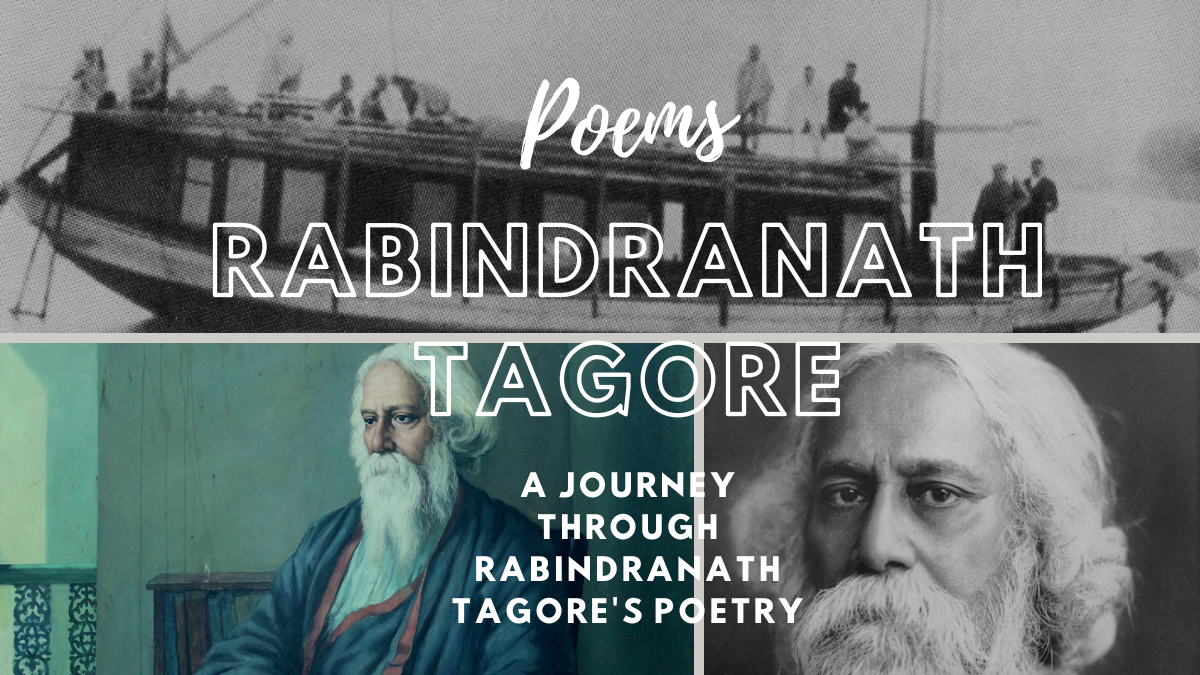Rabindranath Tagore Poems – Rabindranath Tagore’s abilities cannot be summarised in a few sentences. He was a gifted polymath with an interest in art and literature. Tagore was a poet, writer, composer, philosopher, social writer, and reformer. He strove to reshape Bengali and Hindi literature and music.
Rabindranath Tagore was born on May 7, 1861 in Calcutta. He was the first Indian to get the Nobel Prize in Literature for his poem Gitanjali. Although his poetry was deemed melodious, it remained largely forgotten outside of Bengal. Tagore was known as the Bard of Bengal. He was known as Gurudev and was a member of the Royal Asiatic Society.
Learn How to Make an Animated Web Series
Rabindranath Tagore Poems
Rabindranath Tagore, one of India’s greatest poets, received the Nobel Prize for Literature in 1913. His father, Debendranath Tagore, was a significant actor in the Bengali renaissance, which tried to revitalise Bengali culture by blending Western materialism with traditional Indian culture. Tagore followed the tradition. He had an exceptionally productive artistic life as a poet. Tagore was also an artist, author, and educator.
Tagore’s first poems were published when he was 17 years old. However, the publication of Gitanjali in America and Great Britain cemented his status as an international poet. Tagore received the Nobel Prize for Literature for his work Gitanjali. Tagore’s poetry reflects his love of nature and his commitment to a universalist philosophy that aims to see God through human service. Tagore was also influenced by the Upanishads, India’s ancient texts.
- Poems on Beauty
- Poems on Love
- Poems on Life
- Poems on Time
- Poems on Unity
- Poems about Man
- The Golden Boat
- Unending Love
- My Song
- Fireflies
- I Wonder If I Know Him
- When I Go Alone at Night
Early Life of Rabindranath Tagore
Rabindranath Tagore was born into a Bengali Brahmin family in Jorasanko Mansion. His family was one of the most reputable in Bengal. Tagore spent the majority of his childhood with his household helper. His mother died while he was quite young, and his father used to travel all over the world. Tagore disliked going to school and frequently avoided classroom teaching; instead, he preferred to travel the surrounding countryside. He used to spend his days wandering the streets of Bolpur and Panihati. His sibling pushed him to join in outdoor activities. One of his brothers compelled him to learn swimming, trekking, gymnastics, and wrestling.
Legacy and Succession
Every year, several events commemorate Rabindranath Tagore’s birth anniversary. Many small groups collaborate to hold the Tagore Festival in Urbana, Illinois, USA. Some groups also plan a walking pilgrimage from Kolkata to Shantiniketan. Anyone interested in learning about Rabindranath Tagore’s life and contributions can visit the museums dedicated to him. There are eight Tagore museums, with five in Bangladesh and three in India.

Achievements
Rabindranath Tagore made history in 1913 by becoming the first non-European to win the Nobel Prize in Literature. In 1915, he was awarded a ‘knighthood’ by the British government in recognition of his respectable standing. However, four years later, in 1919, Britishers perpetrated the ‘Jallianwala Bagh Massacre’, and he surrendered his knighthood title in protest. Establishment of Shantiniketan – Debendranath Tagore had earlier purchased land, which was later shifted by Rabindranath in 1902 to establish a ‘ashram’ to create an experimental school on his father’s property.
He was an excellent poet with a large collection of poems. He has composed around 2200 songs. Rabindranath Tagore was also an accomplished painter, having created over 2300 works. In addition, he enjoyed travelling. During his lifetime, he visited around 34 countries. Calcutta University awarded him with a Doctor of Literature degree at a special convocation on December 20, 1915. On August 7, 1940, Sir Maurice Guryer, the then Chief Justice of India, had the honour of visiting Shantiniketan as a representative of the University of Oxford and conferring a ‘Oxford Doctorate.’
Conclusion
Rabindranath Tagore‘s autobiography is a reflection of the man himself: profound, thoughtful, and filled with a love of humanity and the environment. It’s more than just a retelling of events; it’s a philosophical trip inside the mind of one of the twentieth century’s best writers.
For anyone who wants to comprehend the complexity and diversity of Indian culture, or who simply wants to delve deep into the mind of a genius, this book is a must-read.









